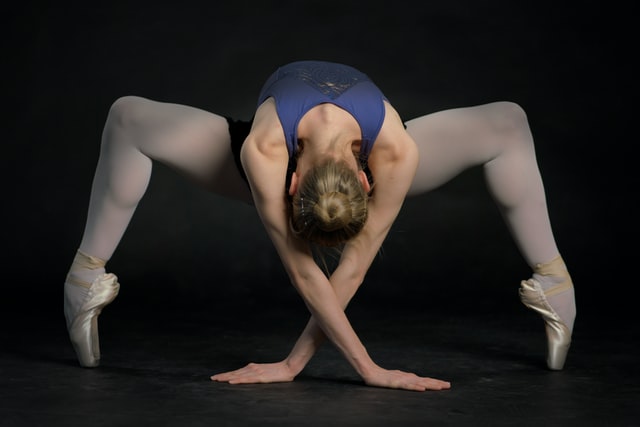The Influence of Ballet and Modern Dance on Broadway ChoreographyIt may not shock you to find out that commercial considerations have influenced the evolution of dance and dance choreography. Money pressure pushed teachers and choreographers of ballet and modern dance to choreograph for musical theater and film productions early on. The book "Ballet and Modern Dance" lays some of this out in the following excerpt.
Title: Ballet and Modern Dance Author: Susan Au Excerpt: |
For many dancers and choreographers of this period, however, employment opportunities were few and far between. The major ballet and modern dance companies were still at an embryonic stage. Musical comedies and films became important performing outlets, providing not only experience but financial rewards. Although some people disdained these outlets for their commercialism and considered them inferior to the pursuit of serious art, the interaction of the two spheres ultimately resulted in gains for both sides. The influx of ballet and modern choreographers into the musical theatre demanded a higher level of proficiency from the dancers and resulted in choreography more complex than the precision dancing and 'routines' of earlier years. Dance acquired more importance in the general scheme of the musical play. The choreographers benefited in turn, for their works were introduced to a wider audience, and they learned how to expand their appeal.
Among the choreographers who worked for the musical theatre or films were Balanchine, de Mille, Fokine, Holm, Horton, Humphrey, Tamiris, Robbins and Weidman. Several won awards for their work: Tamiris received an Antoinette Perry Award ('Tony') for Touch and Go (1949), while Holm won the New York Drama Critics Award for Kiss Me, Kate (1948), which became the first choreographic work to be copyrighted by the Library of Congress. The film version of West Side Story (1962), which Robbins directed and choreographed, earned him two Academy Awards.
Balanchine introduced the use of the word choreography to Broadway in On Your Toes (1936). Unlike most earlier dances in musicals, which existed as separate 'production numbers', his ballets were integrated with the plot, which depicted a music professor's entry into the hothouse world of Russian ballet. The 'Princess Zenobia' ballet was a satire of Scheherazade; 'Slaughter on Tenth Avenue' combined ballet and tap dancing in a tale of doomed love between a hoofer and a stripper. De Mille's history-making dream ballet in Oklahoma! (1943), 'Laurey Makes Up Her Mind', advanced the plot by communicating the heroine's doubts and perplexity about which man to choose to take her to a social. Holm had a knack for making dance arise seamlessly out of the action of the play; it never seemed contrived. In 'Another Op'nin', Another Show', which opened Kiss Me, Kate, actors and dancers are seen backstage, warming up, practising their parts and releasing high spirits by cavorting as they prepare for a performance.
The British film The Red Shoes (1948) stimulated interest in ballet on both sides of the Atlantic. Its title ballet, choreographed by Helpmann, was conceived first, and a somewhat melodramatic story was written around it. The two parallel one another: in Andersen's fairy tale The Red Shoes, a girl is punished for dancing instead of going to church, while in the drama a ballerina (Moira Shearer) commits suicide because she cannot decide between her career and marriage. The ballet utilized many cinematic tricks: the red shoes offered to the girl by the sinister shoemaker (Massine) pop magically onto her feet; a drifting sheet of newspaper becomes a male dancer; the ballerina falls weightlessly through space.
- from "Ballet and Modern Dance," by Susan Au
Among the choreographers who worked for the musical theatre or films were Balanchine, de Mille, Fokine, Holm, Horton, Humphrey, Tamiris, Robbins and Weidman. Several won awards for their work: Tamiris received an Antoinette Perry Award ('Tony') for Touch and Go (1949), while Holm won the New York Drama Critics Award for Kiss Me, Kate (1948), which became the first choreographic work to be copyrighted by the Library of Congress. The film version of West Side Story (1962), which Robbins directed and choreographed, earned him two Academy Awards.
Balanchine introduced the use of the word choreography to Broadway in On Your Toes (1936). Unlike most earlier dances in musicals, which existed as separate 'production numbers', his ballets were integrated with the plot, which depicted a music professor's entry into the hothouse world of Russian ballet. The 'Princess Zenobia' ballet was a satire of Scheherazade; 'Slaughter on Tenth Avenue' combined ballet and tap dancing in a tale of doomed love between a hoofer and a stripper. De Mille's history-making dream ballet in Oklahoma! (1943), 'Laurey Makes Up Her Mind', advanced the plot by communicating the heroine's doubts and perplexity about which man to choose to take her to a social. Holm had a knack for making dance arise seamlessly out of the action of the play; it never seemed contrived. In 'Another Op'nin', Another Show', which opened Kiss Me, Kate, actors and dancers are seen backstage, warming up, practising their parts and releasing high spirits by cavorting as they prepare for a performance.
The British film The Red Shoes (1948) stimulated interest in ballet on both sides of the Atlantic. Its title ballet, choreographed by Helpmann, was conceived first, and a somewhat melodramatic story was written around it. The two parallel one another: in Andersen's fairy tale The Red Shoes, a girl is punished for dancing instead of going to church, while in the drama a ballerina (Moira Shearer) commits suicide because she cannot decide between her career and marriage. The ballet utilized many cinematic tricks: the red shoes offered to the girl by the sinister shoemaker (Massine) pop magically onto her feet; a drifting sheet of newspaper becomes a male dancer; the ballerina falls weightlessly through space.
- from "Ballet and Modern Dance," by Susan Au
